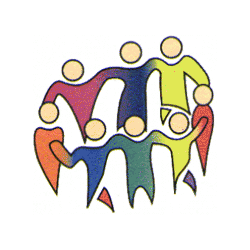 My perception of group therapy is in part informed by two books: Irvin Yalom’s novel The Schopenhauer Cure and Norah Ephron’s Heartburn. Formal training is an essential foundation, and so is experience, but sometimes there is nothing as instructive as well-informed fiction. Yalom the consummate group therapist, and Ephron is a compelling storyteller. Needless to say, they craft persuasive arguments in favor of group therapy — a place to go for feedback on what it is like to be around “me.”
My perception of group therapy is in part informed by two books: Irvin Yalom’s novel The Schopenhauer Cure and Norah Ephron’s Heartburn. Formal training is an essential foundation, and so is experience, but sometimes there is nothing as instructive as well-informed fiction. Yalom the consummate group therapist, and Ephron is a compelling storyteller. Needless to say, they craft persuasive arguments in favor of group therapy — a place to go for feedback on what it is like to be around “me.”
Not surprisingly, there are ground rules designed to make the group feel safe and keep members on track. In addition to novels, Yalom also wrote the preeminent professional text on group therapy, The Theory and Practice of Group Psychotherapy, in which he outlines eleven primary factors of the therapeutic experience. These include the installation of hope, universality, imparting information, altruism, corrective recapitulation, socializing techniques, imitative behavior, interpersonal learning, group cohesion, catharsis and existential factors.
Over the next several weeks, as my colleagues and I explore the therapeutic value of group therapy it is our intention to shine a light on the structure, function, and value of group work in a creative, curious, and informative manner comprised of resources and inspiration, including generating a conversation among our readers. Suggestions and questions are welcomed online or off.
[su_quote]Friends, family, and colleagues are in the habit of letting us know their opinions, giving us unsolicited advice, and making suggestions.[/su_quote]
Groups are everywhere in life; our families of origin, our family of creation, friends, interests, sports, school, professional, and community. Friends, family, and colleagues are in the habit of letting us know their opinions, giving us unsolicited advice, and making suggestions. As you can imagine, not all feedback is welcomed, useful, or kind. In group therapy, members continually get and give feedback all within the safe confines of the group context. I am confident my self-perception is different than your perception of me. Considering the difference between my perception and yours — my intention versus the impact of my actions — I am forced to be vulnerable, curious, and hopefully, honest. I unveil feelings that have long laid dormant.
[su_quote]I thought I could “audit” group and that I would get what I needed by watching others figure themselves out.[/su_quote]
A year into my first group therapy experience, one of the members looked me in the eye and told me how much she loved watching me change and how she remembered when all I could talk about was everyone else and what they needed. I was preparing myself for criticism and was overcome by the flood of appreciation to have my growth mirrored back to me. Group therapy was not easy. I thought that I could be the thoughtful observer, the empathetic listener. I thought I could “audit” group and that I would get what I needed by watching others figure themselves out. As my fellow members occasionally ask, “how’s that working for you?”
[su_quote]Groups are uniquely positioned to be both a safe space and a crucible for new behaviors.[/su_quote]
An ideal group is a reflection of the context which brings together a disparate assortment of individuals and their interactions with each other. With a goal of considering, embracing, and investigating the possibility of change, groups are uniquely positioned to be both a safe space and a crucible for new behaviors. The interpersonal interactions in the here-and-now offer group members a chance to identify old behavior patterns that no longer serve their intended purpose.
For additional reading on Group Therapy for Men see Dr. Carl Siegel’s article Why Group Therapy for Men: 5 Benefits

